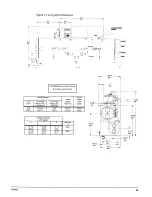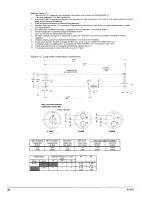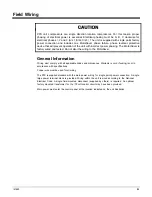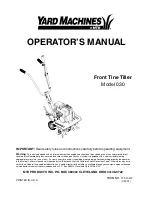
Evaporator and Condenser Water Piping
PFS evaporators and condensers are equipped with either victaulic or flange connections. The
installing contractor must provide matching connections.
Remove the solid-state temperature sensor and thermostat bulbs from the wells to prevent
damage to those components when welding on the victaulic or flange connections.
Connect the condenser with the inlet water entering at the bottom to maximize subcooling. The
condenser water will discharge from the top connection.
Support piping to reduce weight and strain on the fittings and connections. Be sure piping is
adequately insulated. Install a cleanable 20-mesh water strainer in evaporator and condenser water
piping. install enough
shutoff
valves
to permit draining water from the evaporator or condenser
without draining the complete system.
Freeze Notice: Neither the evaporator nor the condenser is self-draining. Both must be
blown out.
Include thermometers at the inlet and outlet connections and air vents at the high points of piping.
The water heads can be interchanged (end for end) allowing water connections to be made at either
end of the unit. Use new head gaskets when interchanging water heads. When water pump noise is
objectionable, use rubber isolation sections at both the inlet and outlet of the pump. Vibration
eliminator sections in the condenser inlet and outlet water lines are not normally required. Where
noise and vibration are critical, and unit is mounted on spring isolators, flexible piping connections
are necessary.
Water treatment
If unit is operating with a cooling tower, clean and flush cooling tower. Make sure tower “blowdown”
or bleedoff is operating. Atmospheric air contains many contaminants which increases the need for
water treatment. The use of untreated water may result in corrosion, erosion, sliming, scaling, or
algae formation. A water treatment service is recommended. McQuay International is not
responsible for damage or faulty operation from untreated or improperly treated water.
Head pressure control, tower system
The minimum entering water temperature to the condenser must not be lower than 70°F (2
Use a three-way bypass valve around the tower to modulate the condenser water flow. Figure 6 shows
a three-way pressure actuator water regulating valve used for cooling applications. This regulating
valve will assure an adequate condensing pressure if the inlet condenser water temperature falls below
70°F). An optional AOX-4 board located in the MicroTech panel will control a cooling tower bypass
valve or a varible speed condenser pump.
IM
663 7








































